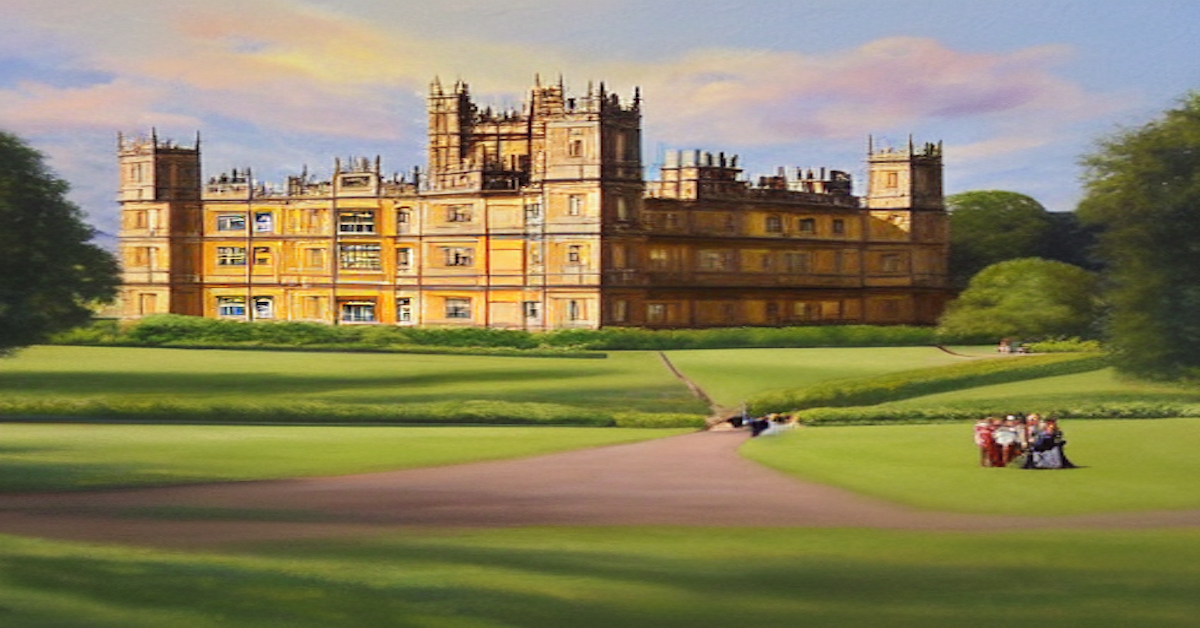As the familiar music of Downton Abbey swells from my television, I can’t help but feel a deep sense of anticipation. Each episode is like a voyage into the past, an exploration of a world both unfamiliar and intimately close to my heart. Today, I’d like to delve into a facet of the show that I find particularly compelling: the complex dynamics of class and societal change reflected in Downton’s rich tapestry of characters and plots.
At its core, Downton Abbey is a study in contrast. The elegant opulence of the Crawley family’s lifestyle is juxtaposed with the simpler, yet no less complex, world of the servants who work tirelessly below stairs. While the upstairs world is filled with lavish dinners, ornate gowns, and intricate social rituals, downstairs is a world of hard work, camaraderie, and an equally intricate web of relationships and politics.
Take Mr. Carson, the stern but lovable butler who is as much a patriarch to the household staff as Lord Grantham is to his family. Carson’s sense of duty, his strict adherence to the rules of service, and his sometimes grudging acceptance of societal changes offer a poignant reflection of a world on the brink of dramatic transformation. His relationship with Mrs. Hughes, the kind-hearted housekeeper, is a testament to the deep bonds and shared experiences of those who live and work within Downton’s walls.
The character of Thomas Barrow, the cunning and ambitious under-butler, provides another fascinating glimpse into the downstairs world. While his scheming and manipulation often set him at odds with his fellow servants, his struggle to accept his homosexuality in a time of rampant homophobia adds depth and complexity to his character. His journey is a painful yet powerful portrayal of the fight for personal authenticity in a rigidly conformist society.
Upstairs, the Crawley family grapples with their own set of challenges. As they navigate the changing tides of the early 20th century, their struggles reflect the tension between preserving tradition and embracing progress. Lady Mary, the eldest daughter, is a prime example of this. Her transformation from a headstrong, somewhat aloof young woman to a competent and progressive manager of the Downton estate is one of the show’s most compelling arcs.
Her younger sister, Lady Edith, often overshadowed by Mary’s strong personality, undergoes her own remarkable transformation. From being the overlooked middle child, she grows into a successful businesswoman and a loving mother. Edith’s journey, marked by personal tragedies and professional triumphs, is a celebration of resilience and an affirmation of the burgeoning feminist movement of the time.
But Downton Abbey’s exploration of class and societal change extends beyond its characters. The show also offers a visually stunning depiction of the evolution of technology and its impact on daily life. The introduction of electricity, the telephone, the automobile, and other innovations serve as potent symbols of the inevitable march of progress. The Crawleys’ and their servants’ reactions to these changes, ranging from excitement to skepticism, mirror society’s ongoing dialogue about the merits and pitfalls of technological advancement.
Then there is the depiction of significant historical events, such as the sinking of the Titanic, World War I, and the Spanish influenza pandemic. These events serve as turning points in the narrative, challenging the characters’ values, reshaping their lives, and marking the transition from the old world to the new.
Yet, amidst all the change, Downton Abbey underscores the enduring value of community and human connection. Despite the vast differences in their social standing, the Crawleys and their servants form a complex, interconnected community. Their interactions, whether fraught with tension or filled with mutual respect, serve as a reminder of ourcommon humanity.
The intricate relationships between the upstairs and downstairs worlds, the struggle for personal and societal progress, and the resilience of the human spirit in the face of change – these are the aspects of Downton Abbey that resonate deeply with me. As an American woman, I may not personally relate to the strict class divisions of early 20th century England, but the universal themes of love, loss, ambition, and adaptation are ones that transcend time and geography.
Downton Abbey, with its richly layered narrative and compelling characters, offers more than just an escape into a bygone era. It’s a mirror that reflects our own struggles and aspirations, our own journey through the changing landscapes of life. It’s a reminder that regardless of our status or circumstances, we all have our roles to play, dreams to pursue, and challenges to overcome.
So, as I sit here, cup of tea in hand, I find myself not just watching Downton Abbey, but living it. I celebrate with the characters in their moments of joy, mourn with them in their times of loss, and learn from them as they navigate the complexities of their world. I marvel at the beauty of Highclere Castle, immerse myself in the intricate social rituals, and ponder the profound changes that sweep through the grand halls and humble quarters of Downton.
In the end, Downton Abbey is more than just a television show; it’s a rich tapestry of stories that explore the depths of the human experience. It’s a journey through time that not only entertains, but also enlightens and inspires. And for that, I will always hold Downton Abbey close to my heart.
From the grandeur of the Crawley family to the quiet dignity of the servants, from the opulence of the upstairs world to the hustle and bustle of the downstairs, Downton Abbey is a testament to the complexities and beauty of life. And as I sit here, savoring the last notes of the theme music, I can’t help but feel a sense of gratitude for this remarkable show that has given me so much. So, here’s to Downton Abbey – a timeless classic that continues to captivate, inspire, and resonate with viewers around the world.


